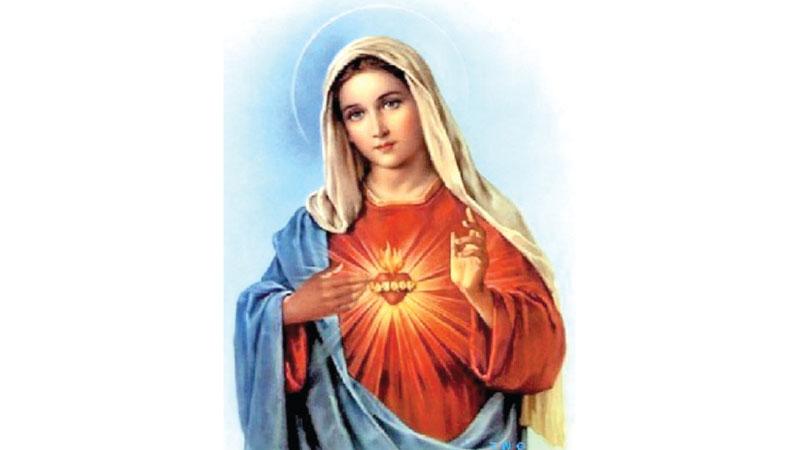
Christian songs have become highly popular in Sri Lanka not only in Christian households but also in Buddhist and other religious communities. Performance of Christmas songs at family gatherings, picnics with friends and many occasions display how popular these songs are in Sri Lankan society.
Christian songs were introduced to Sri Lanka by the arrival of the Portuguese, though initially the songs might have been sung in their own language or Latin it is believed. It was Father Jacome Gonsalves (1676-1742 AD) who started Sinhala Christian songs. These songs were spread by word of mouth. Subsequently, Christian Sinhala songs became popular during the British rule. A leading part in this respect was played by Sunil Shantha, Father Moses Perera and Father Marcelline Jayakody. Especially, Father Marcelline Jayakody revolutionized Christian Sinhala songs in accordance with Sri Lankan culture. His songs Reya Tharu Babalanava, Nelum Pipila Pethi Visrila changed the trend of Christian Sinhala songs. In the latter part of the 1940s most of the songs were recorded by Chithra Somapala, Latha Walpola and C.T. Fernando.
Namo Mariyani is a hot favourite, resonating not only the Christmas season but is also heard in every living room throughout the year. This song celebrates its 70th Anniversary this year in recognition of its glorious popularity. The main reason is the gifted high pitched golden voice of Latha who dominated for seven decades with her unbeatable vivacity supported by its attractive lyrics and lovely music.
Latha Walpola, the greatest living legend of playback singing for the Sinhala silver screen, with her golden voice, was born and bred in Mount Lavinia (Galkissa). She began her schooling at St. Anthony’s College, Mount Lavinia and displayed her competence in singing joining the Church choir.
It is unprecedented that famous radio artistes such as Susil Premaratne, Vincent de Alwis, C.A. Fonseka, C.T. Fernando Ervin Fonseka also lived in the neighbourhood of Latha at Pieris Rd, Mount Lavinia. A close association with these artistes encouraged her to become a future songstress later. The composition of Namo Mariyani emerged in this background.
Known by her childhood name as Rita Jenevi Fernando she was introduced to then Radio Ceylon at the age of 12, with her mother’s permission by her family friend C.A. Fonseka a popular radio dramatist at the time. He is the musician who helped artistes such as, Rukmani, Susil, Latha, Freddie and C.D. Fonseka to become popular artists. At the beginning Latha sang songs in C.A. Fonseka’s Sarala Gee program as a member of the Choir ( Samuha Gayana) with his son C.D Fonseka.
In 1947 Latha made her debut in singing “Kandulu Denethe Vehena”. Namo Mariyani which had been recorded in 1949 became an everlasting popular song.
In 1949 Namo Mariyani recorded in HMV Label records, became highly popular in Sri Lanka. First, Latha sang this song with Ervin Fonseka at Radio Ceylon. Latha recorded the same song for HMV Records exactly 70 years ago.
Drama writer and musician Ervin Fonseka was the elder son of C.A Fonseka, the composer of this lovely song. According to musician Dharshani Chandrasena, (daughter of Maestro R.A. Chandrasen), the melody applied by Ervin Fonseka was based major scale three primary codes, frequently heard in Western music. This melody gives brighter light to Namo Mariyani.
The most significant part of this song was played by excellent lyrics and the talented lyricist. It was written by Kalidasa Kurukulasuriya, a Buddhist and a teacher at Ananda College. It was a special feature during this time that he was the Principal of Sumanarama Vidyalaya, Mount Lavinia and the Chief of Dayaka Sabhawa at Sumanarama Temple, Mount Lavinia.
From the early 1940s Christian songs were composed with the cultural taste of Sinhala poetry especially, with the influence of Father Marcellain Jayakody’s songs. But the composition of Namo Mariyani by Kalidasa Kurukulasuriya seems a depiction of wordings from the carols of Rev. Father Jacome Gonsalves such as ‘Devidu Upanenya Sathuni’.
In early days some skilled singers from neighbouring areas met at specific locations. The perfect example is Maradana and Mount Lavinia. Amazingly, all the artists who contributed to Namo Mariyani were neighbours. Latha lived down Peiris Road, Mount Lavinia, Ervin Fonseka at Siripala Road, and lyricist Kalidasa Kurukulasuriya was at Sumanarama Road, Mount Lavinia.
All these roads were linked through small lanes at that time. and the singers gathered together frequently. Hence, this great production of Namo Mariyani was created as a result of a group of talented individuals from Mount Lavinia.
This lovely song has today reached the zenith of its glory. Its popularity is such that no carols are sung without Namo Mariyani today. The other special feature is that Latha still sings this song at high pitched scale at the age of 86. The reality is that Namo Mariyani is everlasting.
The writer is the retired former Head of Corporate Affairs and Communications - Sri Lanka Export Development Board and Ex-Director of Sri Lanka Trade Centre in the Maldives. He can be reached at [email protected]
